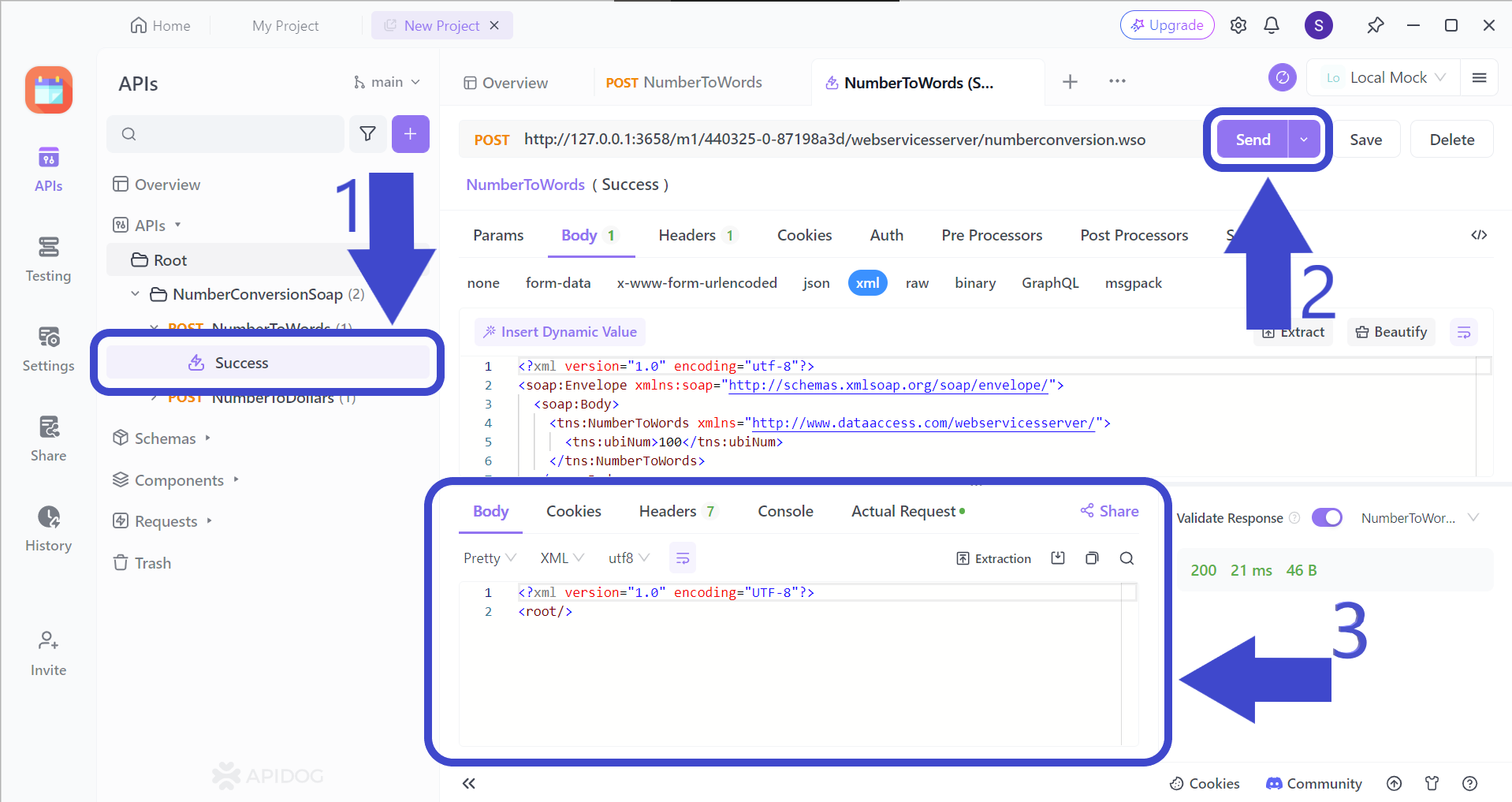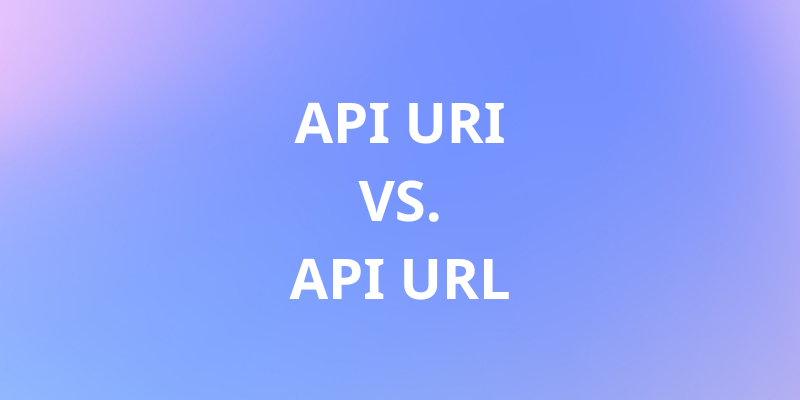There are so many different acronyms that describe a myriad of terms in the world of computers, so knowing and understanding each one of them has never been more important. If someone asks you what the difference is between an API URI and an API URL, can you answer them immediately?
If you wish to try Apidog, click on the button below! 👇👇👇

Before comparing the two API (Application Programming Interface) terms mentioned before, let us go deeper into each one.
What is an API URI?
An API URI (Uniform Resource Identifier) is a specific address that is required to locate and interact with resources within a specific API. In other words, it is the unique address for a specific piece of information found within the API.
Composition of an API URI
- Protocol: A protocol specifies how to communicate with the API, usually HTTP (Hypertext Transfer Protocol) or HTTPS (secure HTTP). For example,
https://inhttps://api.example.com/users. - Host: The host can identify the server where the API resides, like
api.example.comin the example above. - Path: The path specifies a specific resource within the API, often starting with a forward slash (/). For example, a path like
/usersmight point to a collection of user data. Sometimes, path components further identify specific items within the resource, like/users/123for a user with ID 123. - Query String (optional): Query strings provide additional parameters to filter or refine the resource, usually following a question mark (
?) and consisting of key-value pairs separated by ampersands (&). For example,/users?name=Johnmight retrieve users named John.
Example of an API URI
Here are a few examples of API URIs in different scenarios, with descriptions telling what is happening:
- Retrieving all users in a system:
https://api.example.com/users(using HTTPS protocol, accessing "users" resource on "api.example.com") - Getting details of a specific user with ID 123:
https://api.example.com/users/123(accessing the user with ID 123 within the "users" resource) - Searching for users with the name "John":
https://api.example.com/users?name=John(using a query parameter to filter by name)
Now that it is clearer what an API URI is, let us proceed with API URLs!

What is an API URL?
An API URL (Uniform Resource Locator) is the specific address used by web developers to access and interact with certain data or functionality within an API.
For practicality, you can think of API URLs as being essentially the same as an API URI. However, remember that there are a few small differences between URIs and URLs, which we will point out in the article below.
API URLs follow the same structure as an API URI, where you can find a protocol, host, path, and optional query string.
Interesting Notes About API URLs
There are a few more points to remember when talking about API URLs, such as the following:
- URLs are more focused on locating resources.
- The two terms
API URLandAPI Endpointare often used interchangeably. Endpoints are specific actions or resources that you can access within an API, whose location is usually defined by the API URL. - Requests are sent to API URLs, therefore it is vital to understand how to construct and utilize API URLs so that you can interact with APIs properly. Fortunately, today's programming languages and libraries have many built-in functions to help you build and send requests.
Examples of API URLs
Here are a few real-life examples of API URLs that you may have seen before, along with a short description of what is happening:
- GitHub:
https://api.github.com/users/Bard(retrieves information about the user "Bard") - OpenWeatherMap:
https://api.openweathermap.org/data/2.5/weather?q=London(gets weather data for London) - Unsplash:
https://api.unsplash.com/photos/random?count=1(retrieves one random photo) - Spotify:
https://api.spotify.com/v1/tracks/7DIc5T4L54qeJrQ7zfnkzL(gets information about a specific track)
Now after seeing API URIs and API URLs, do you see a glaring difference?
Technical Difference Between API URIs and API URLs
Here is a table that describes the minute differences between an API URI and an API URL. The differences are quite slight, so you might require more time to get accustomed to them.
| API URI | API URL | |
|---|---|---|
| Scope | Can encompass a wider range of identifiers, including names, locations, and both. | Specifically identifies the location of a resource on a network. |
| Focus | Identifies a resource, regardless of its access protocol or location details. | Provides the protocol, server address, and path to access the resource. |
| Location Specificity | Can be location-independent. | Always specifies the network location of the resource. |
| Scheme Dependence | Not tied to one specific protocol. | Dependent on a protocol such as HTTP or HTTPS. |
A Design-First API Development Platform - Apidog
Apidog is a complete all-in-one API development platform that allows developers to design, debug, test, document, and mock APIs. It covers the entire API lifecycle - perfect for web developers that require a breath of fresh air.

Apidog's clean and intuitive UI (user interface) allows new developers to quickly learn how to navigate and utilize Apidog's various powerful functions.
Importing your API Files Onto Apidog
If you have an existing API(s) that you would like to immediately start editing or debugging, you can import it onto Apidog!

Just select the appropriate file type that corresponds to your API file. If you cannot find the exact file type, just drag the file over to the bottom portion of the window, as shown in the image above.
Testing API Endpoints (or API URLs) with Apidog
We can test if your API endpoints are functioning normally by sending a request with Apidog. Once you have imported your files onto Apidog, you should be able to see your screen with something similar to the image below:

Choose one of your APIs' requests available on the right side of the screen, as shown by Arrow 1.
Then, you can send the request by clicking on the button pointed out by Arrow 2, but ensure that you have either selected the right environment or included the correct request API URL.
Finally, head to the response section to see the response received after sending the request, and check if it is the same as what is expected.
Conclusion
API URIs and API URLs are very similar in terms of structure, therefore many essentially regard them as the same thing for simplicity's sake. However, you ought to be aware of the technical differences that each possesses, as they might not exactly substitute one another in all situations.
Apidog is a full-package API development platform that fulfills the needs of many web developers. You can debug, design, and build APIs either as an individual or a team with Apidog.




